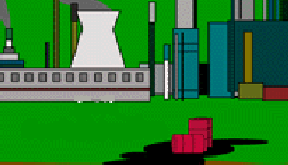Nanosponges soak up pollutants
Tiny, specially designed particles draw pollutants out of contaminated soil.
By Emily Sohn
What could be worse than toxic sludge seeping into soil, poisoning animals and people? The headache of cleaning up all that muck.
For years, engineers have struggled to get oil and tar out of the ground at hazardous-waste sites around the United States. Current methods are costly and inefficient.

Now, environmental engineers from Cornell University say they may have a better solution. Their strategy involves nanotechnology, a new type of science involving very, very tiny things.
In this case, the researchers created a special type of particle, measuring just 20 nanometers across. In comparison, each hair on your head is about 50,000 nanometers wide. The surface of the particle attracts water. The inside avoids water.
The engineers then pumped a solution containing the new particles into a column of sand that was contaminated with a chemical called phenanthrene. The chemical is often found in coal tar.
The nanoparticles were small enough to move through spaces between the sand grains. As the particles moved upward from the bottom of the sand column, their water-hating interiors sucked phenanthrene out of the sand, trapping it inside.
The next challenge is to figure out how to make sure the cleanser nanoparticles return to the surface of the soil, where they can be gathered up and flushed clean of chemicals.
To get around that problem, another group of scientists is trying to make nanoparticles that can convert contaminants into less harmful chemicals. That way, the particles could just stay in the soil.
Smaller may really be better when it comes to cleaning up contaminated soil.
Going Deeper:
Goho, Alexandra. 2004. Nanosponges: Plastic particles pick up pollutants. Science News 165(Feb. 21):116-117.
Information for kids about soil contamination can be found at www.epa.gov/superfund/students/wastsite/soilspil.htm (U.S. Environmental Protection Agency).







